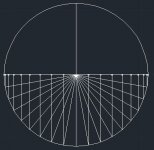dont shoot the messenger .......please....:smile:
but those that post exact diagrams of tuckers stuff is keeping the interested from buying the dvd from him ( providing the info for free.....not good )
he did the work
he should get rewarded (imho)
buy the dvd if you you really want to learn his system
jmho
icbw
Larry,
I joined Joe's website and found quite a bit of info on this system. He's got a lot of workouts for the system and a 2 part dvd to go along with it. The dvd has a lot of Joe's insight for using the different angles. This thread is just the basics.
Until I read his literature and watched the videos, I had several misconceptions and was hitting the wrong number combinations on the balls. I even PMed Joe to get his input on this thread and hopefully he'll pay a visit.
Mike's description and my simple drawings don't give away much and are much more likely to raise interest than diminish it - I think they're good advertising for Tucker. A lot of the product's value is in the instructions, drills, presentations and training materials.
pj
chgo
I agree with your assessment of the value this thread has been for Joe's system. Up until a few weeks ago, I gave it a quick look and thought it was just CP2CP aiming...nothing new. I was definitely surprised by what I found and learned some new info to boot. I'd never have tried it out without this thread.
Best,
Mike
